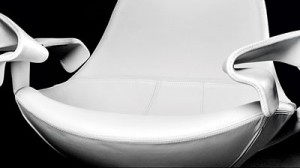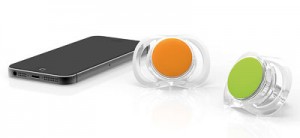Audi sends car to US electronic show from a neighbouring city, without a driver
Headlining this year’s Business Times coverage of the US-based Consumer Electronics Show (CES), the world’s largest four-day new tech product showcase featuring 170,000 visitors and 3,600 exhibitors this year alone, is a mix of new tech, in the form of expanding options for 3D printers and Virtual Reality (VR) systems and even a self-driving car or three, as well as the mainstays of the event, such as TVs, laptops and smartphones.
It’s hard to know where to start, even after reporting on CES two years ago, especially since hundreds of products, literally, were debuted at this event, so the Business Times has highlighted just a few, key products catching the interest of only the most respected tech websites on-site at CES 2015, including CNET, Wired, Gizmodo, etc. to name but a few.
So, again, where to start? The most innovative? The coolest? Or, this year, why not start with the most expensive? The hands-down most expensive product, aside from the concept cars and devices that are yet to become available in the market if ever, was the Samsung 105-inch bendable TV, priced at US$ 120,000. And if that doesn’t break one’s bank account, add Swans 2.8A front speakers at $42,000, to be on the way to putting together one of the world’s most expensive home entertainment centres.
Getting back to actual innovations though, the true star at the 2015 CES was undoubtedly the fledgling field of 3D printing. Where in the years prior, this area was more a novelty than an actual market, advances in technology, a growing number of materials being used and falling prices of products have extended 3D printing’s reach to the masses, with CES seeing products in this category now starting from $ 1,499, which makes it affordable to hobbyists and other early adopters.
Added to the above was the fact that this year’s CES demonstrated an array of new areas wherein 3D printing could be used, with 3D-printed food, dresses and toys all being displayed. Further, the possibilities are virtually endless, with materials such as metal, wood, stone, nylon and certain types of food, for example bread, biscuit and chocolate, added to the mix. Also noteworthy, according to CNET, there were 57 vendors exhibiting their wares this year.
3D Printers
Of all the 3D printers showcased at this year’s CES, the best reviewed was undoubtedly XYZ printing’s Nobel 1.0. While relatively inexpensive at $1,499, it was also one of the faster 3D printers shown at CES. Interestingly, this same company also demonstrated a 3D food printer, which printed cookie and cake decorations, which would be available at $2,000 by mid-2015.
Also well reviewed, the Cubify CubePro, one of the fastest 3D printers around, as well as the 3D Systems ChefJet Food Printer, the DWSLab XFAB 3D Printer, the Orian Delta 3D Printer, the SeeMeCNC Eris 3D Printer and the Weistek IdeaWerk Plus Desktop 3D Printer, both small objects printers that fit on one’s desk, the Polar 3D Printer, the 3DP Unlimited 3DP1000 Large Format 3D Printer, the highly precise (to 1 micron) and very expensive Old World Labs MC1 3D Printer, and finally the MarkFor3D Mark One, one of the first composite 3D printers capable of reinforcing its creations with carbon fibre, fibre glass and even Kevlar.
Beyond this new era tech, CES also showcased a number of products for the everyday consumer, such as laptops and smartphones.
Laptops
The most buzzed about laptop at this year’s CES was the Dell XPS 13 Ultrabook, this year’s MacBook Air killer. With dimensions that make it lighter and more compact than a 13-inch MacBook Air, this machine has impressed CES reviewers and audiences alike.Touted as being lighter (at 1.2 kg) and lower priced (at $899.99), with a much larger display, than its equivalent MacBook Air, the Dell XPS also promises a 15 hours battery life. Besides the Dell, there were other so-called MacBook Air killer-type ultrabooks and 2-in-1s also being showcased at CES, including the 15-inch Acer Chromebook, the Samsung ATIV Book 9, the Lenovo LaVie Z, and the Asus Transformer Chi. Offering better technical specifications because of their use of the new Intel Broadwell processor, many of these laptops are slimmer and faster with better visual components and longer battery lives.
Promoted as the “world’s first gaming laptop”, the MSI GT80 Titan comes with the state-of-the-art, quad-core Intel Core i7-4980HQ “Haswell” microprocessor, as well as all the tweaks required to make it a force to reckon with while keeping the weight to just over 4kg. However, the price makes up for it, with this product expected to come to market at over $3,000 and without some of the cooler customisations that a gamer expects. But it does come with a Cherry MX Brown mechanical keyboard, back0lit keys as well as a two-button track pad, a mechanical number pad and gold-plated W-A-S-D keys.
Despite not really fitting into the category of laptops, or in fact any other type of PC category, CES audiences witnessed the launch of a modular PC concept by new brand The Hive. It offers either an outright purchased version (Amplicity Anywhere) or a leased version (Amplicity by The Hive), both of which start with a core, pocket PC type unit with hardware and software added to it, module by module, until a PC is created for the job at hand. The leased version will also likely be upgradeable after the initial six-month lease is done. More details about this concept will be available soon, with rough pricing and launch periods for the USA already being revealed.
Smartphones
With Mobile World Congress now becoming the go-to event for big name brands to launch their iPhone-killers, there was not much in the way of groundbreaking news when it came to smart phones at CES. But there was a little, and the launch of the LG Flex 2 took the spotlight.
A curved-at-both sides, 5-inch, Snapdragon 810 quad-core processor-powered smart device, the G Flex 2 runs on the Android 5.0 Lollipop platform and features a full-HD P-OLED display with a 1080 x 1920 pixels resolution and a 403ppi pixel density. What’s more the phone comes equipped with a much faster version of its “self-healing” cover that attracted a lot of interest in 2013, this is when a damaged cover ‘heals itself’ within, now 10 seconds.
Also revealed at CES 2015, were a host of phones from mobile industry up-and-comers including Asus, Lenovo, HTC, and ZTE as a result of Samsung’s Mobile arm sitting out this event. From Asus, there was the ZenFone 2 and the ZenFone Zoom, with the former said to pack in 4GB of RAM as well as the faster, Intel Atom chip and the latter offering 3x Optical Zoom for photography enthusiasts.
At the same time, Lenovo showcased its Vibe X2 Pro, P90 and A6000 smartphones. The most interesting of these, according to coverage by India’s NDTV, was the newly introduced, price conscious A6000, which is being tipped to take on Micromax and Xiaomi phones with similar specs, which could seriously disrupt this sector in India as well as other highly price sensitive markets.
In addition, the well recognised HTC also launched its 4G-enabled Android 5.0 Lollipop-based the Desire 826, which will come to Asia soon, while ZTE debuted its Grand X Max+ phablet. And Acer and BlackBerry also released new products.
Two other standouts, but more for gimmicks than actual tech, were the highly expensive, steal and leather framed Tonino Lamborghini with its hefty price tag of $6,000, and the Energizer’s Energy 400 and 500 Hardcase series of rugged smartphones that are known for its extensive battery life.
Stepping away from the traditional areas of CES for a while, another new field that rocked CES this year was the area of drones. There were a number of stalls showcasing new uses for drones, ranging from the silly to the scary. While drones are well established for their modern take on photography, reaching elevations and showing panoramas unseen before, there were also a number of exhibits that showed synchronised drone ‘dancing’ as well as drones geared towards object retrieval amongst other tasks. This is definitely an area that is sure to grow in upcoming years.
Tying in drones with another fascinating area, which took CES 2013 and 2014 by storm, Virtual Reality (headset), is the Micro Drone 3.0. This product used a Google Cardboard VR headset to show the user the view from its 720p HD camera, while being controlled by a smartphone or radio controller.
Another noteworthy recent development highlighted this year’s CES, this time in the also new field of VR, was Milk VR and Samsung’s commitment to it, which when added to the news that Facebook has funded VR-innovator Oculus Rift, to the tune of $2 billio, means that this technology is on the verge of being the next big thing.
Automobiles
CES 2015 also showcased a number of automotive innovations, from self-driving and self-parking cars to alternative modes of transport. The big news of the event was undoubtedly Audi sending a car to CES from a neighbouring city, without a driver. Not to be out done, Mercedes Benz revealed its ‘luxury in motion’ 15-foot long luxury town car which features self-driving as well as a luxurious interior more fitting to a plush living room than a car.
More practical real world demonstrations at the show focused on showing how cars could use self-parking additions to benefit drivers in the near future, parking for them or helping them avoid collisions.
There were also a number of alternative transports models. One such concept was the Gogoro, which is a concept electric car that works with an infrastructure of battery swapping stations. So, instead of charging a car, one swaps out the battery in less than 10 seconds and continues with their journey.
Another noteworthy development was Toyota announcing at CES that it was opening up its hydrogen fuel cell patents to facilitate development of this so far stalled, costly technology. While expected to introduce new cars featuring this technology, the cost of purchase offered by all big name car brands developing these continues to make these products untenable.
Other alternative transport options unveiled at CES include the Onewheel and Rollkers, amongst others, where people step on or into more portable, still-automated versions of the highly popular “Segway” personal transporter.
Connected homes
The Internet of Things (IoT) concept has led to a vast field that encompasses almost any device imaginable, from washing machines to light bulbs and CES was the perfect showcase for these, with related products having been shown at this event in years gone by.
This year too saw the LG Twin Wash washing machine, the iHome Smart Plug, Samsung’s dual door oven, FirstBuild’s ChillHub amongst others, many of which were showcases for Apple’s HomeKit, Samsung’s SmartThings and Google’s Nest connected home platforms.
While there was an abundance of gadgets at CES 2015, there were a few truly cutting edge products that garnered a lot of attention. These included:
Quell
A passport-sized wearable that uses TEN technology to trigger functionality in one’s own body to release pain-relieving opioids that can help with conditions such as sciatica, rheumatoid arthritis, and fibromyalgia. Controlled by an app, this device will soon be available over the counter, with it already being available with a prescription in certain locales.
MagicBook
An augmented reality app, the Magic Book turns reading books into a 3D experience, with characters from popular stories coming to life when an iPhone is “hovered” over the book’s screen.
The Carbon Flyer
While this is a drone, its novel because it is essentially a sheet of paper, making it look like a paper airplane. But when you add a battery, a camera and a controller, wondrous things can happen. And the price is just $99.
Muse
Currently offering a headband to analyse brainwaves and an app called Calm to interpret these into ways to relax one’s mind, this is just the beginning of what Muse aims to do with the technology.
StoreDot
This company demoed a modified phone, which can be charged up to 100 times faster than today’s conventional smartphone batteries.
(JH)

TAO Chair -Using isometric exercise to work out a person sitting in a chair and watching TV is the 2015 goal of fitness company TAO, which last year introduced the WellShell at CES. While this year's prototype of the TAO Chair only showed off functionality for the orking out arms, the company has outlined plans to eventually also exercise legs, thighs and the buttocks.

Petcube - Described as baby monitor for pets, the Petcube comprises a built-in camera, a laser, and a speaker which allows a pet-crazy owner to interact with their pets while at work or out of town. Petcube livestreams 720p HD wide-angle video to a smart device an, tying into it, allows pet owners to play with and talk to their beloved pets using the laser and speaker, respectively. Priced at $199, it is currently available on Amazon.

Pacifi - Resembling a baby's pacifier, the new Pacifi is actually a smart device to track the health of infants, measuring their temperature and transmitting it via a connected Android and/or iPhone app. Costing just US$ 40, it will be first available in Europe where it is currently awaiting its European Medical Device Class IIa license. Further, this smart device can also incorporate medical information such as type of medicine, dosage and when it was last given to adequately track progress when an infant is unwell.


